“What is the best camera for film making? What is the best microphone, the best tripod? What drones do you recommend?” – I get tons of questions about the gear that I use to create my videos and I figured it might be best to capture everything on a single page.
I bought all of these items with my own money and every item in this list is something that I personally love and use and would recommend to my friends and family in a heartbeat! Keep in mind that is no guarantee that any of these items are great for you or your purpose, situation or budget. Please inform yourself properly before making any rash decisions.
Note that the links on this page are affiliate links and I will get a small commission if you purchase through them. It won’t cost you anything extra so if you would like to support me, please consider using them :)
My Film Making Camera – Canon 5D Mark III
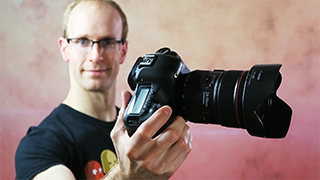
Almost all of my film projects have been shot on the Canon 5D Mark III. There is now also a Mark IV available, but I have not felt the need to upgrade – yet.
The 5D shoots amazing 1080p video and with some good lenses in front of the body I can get all the cinematic shots I really need. Just make sure you use either a tripod or some other form of stabilisation while filming to get nice and smooth shots.
The only features I find lacking in the 5D are autofocus during video recording, an articulating screen and slow-motion support which you can find in some other Canon cameras like the Canon EOS 70D.
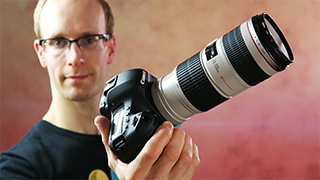
In terms of lenses for the Canon 5D, I primarily use both the Canon EF 24-70mm II USM and the Canon EF 70-200mm f/4L USM. With those two lenses I have the focal range from 24-200mm covered and can get 95% of all the shots I could ever want. For product reviews I might also make use of the Canon EF 100mm f/2.8 Macro USM to get some of those cool detailed macro shots.
These lenses are amazing quality, but they are expensive. You can often find cheaper alternatives, either from Canon or other brands like Tamron or Sigma.
My Vlogging Camera – Canon G7X
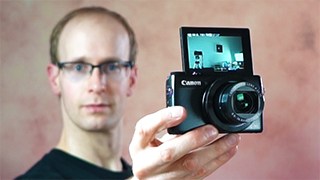
Almost all of my vlogs and behind the scenes footage are shot on the superb Canon Powershot G7X. I absolutely love this camera. I love it so much that, after I broke the camera while trekking through Nepal due to dirt and dust, I went straight back and bought another one.
The video quality, especially the inbuilt image stabilisation, is absolutely amazing. It is easy to walk around with the camera and use it for vlogging or capture some really cool shots just holding it in your hand.
The files are high quality and compact even with 1080p and a single battery lasts me a good 40 minutes of active shooting. The only issue can be the audio quality, especially on windy days as the G7X has no external microphone jack.
Unfortunately the G7X does not have a hotshoe adapter and so I cannot connect my Rode VideoMic to it to give me professional audio. If Canon ever gets around to fixing this oversight I’d proclaim it the best vlogging camera ever!
If you are looking for a slightly cheaper option while keeping the awesome video quality and stabilization check out the Canon S120. I used to own one before I upgraded. It is awesome for the price!
I love this camera so much that I even made a review video for the Canon G7X!
My Travel Camera – Sony Alpha 6500
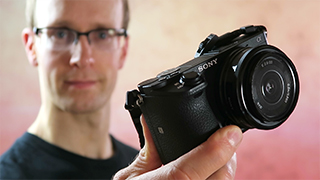
I love my Canon 5D, but it is heavy and with my 2 main lenses takes up a lot of room in my luggage when we travel. Therefore, I decided to give the Sony Alpha 6500 a try and I really enjoy using it!
I have always been apprehensive about mirrorless cameras because I just hate the digital viewfinders and I don’t use it on the Sony Alpha 6500 either, I just rely on the LCD screen at the back.
While it is a crop sensor camera, the sensor size is nice and big and even in low light, I get great images out of it. 4K video and the ability to shoot slow motion (100 FPS at 1080p!) make it a great video camera as well.
The only issues I have with the camera to make it a perfect all-rounder are: the screen does not flip 180 degrees which makes it impossible to see yourself while vlogging. Also, image stabilisation when trying to film yourself is pretty wobbly and on bright days it can be challenging to see the LCD screen clearly due to a lot of reflections.
But as a replacement for my Canon 5D in terms of travel photography, it kicks ass! The 2 lenses I usually bring along on travel with me to accompany the Sony Alpha 6500 are the
Sony 18-200mm F3.5-6.3 E-mount lens for all day walking around and the Sony SEL-20F28 E-mount 20mm F2.8 prime lens for low light situations.
I still bring the Canon G7X along though for any vlogging I want to do. The image stabilisation is unbeatable!
My Favourite Drone – DJI Mavic Pro
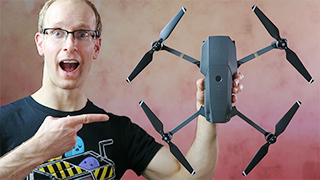
In my humble opinion, the DJI Mavic Pro is probably the best, lightweight, consumer grade drone that you can buy.
We held out getting into the drone market for a long time because nothing offered the portability and quality we wanted to easily take the drone with us on our travels. The DJI Mavic Pro changed all of that.
It shoots amazing, stabilised 4K video and folds up to a size that I could fit into the pocket of some of my baggier shorts. It takes me about 2 minutes to get the Mavic set up and into the air and it is intelligent enough to return back to me should the signal falter or I forget to check the battery.
There are too many great things to be said and so I created a review video for the DJI Mavic Pro!
I absolutely love this drone. It’s not a cheap option by any means, but I can take it anywhere in the world, get beautiful aerial shots and won’t have to worry that it might fall from the sky after a little bit of usage.
If you are considering getting the Mavic, I recommend also getting the Fly More Combo as each battery lasts for about a 30 minute flight. You really don’t want to end up having to go back home during a beautiful sunset because your one and only battery is flat.
There is now also the DJI Spark which looks awesome and even more compact that the Mavic, but I have not yet had the chance to try it for myself.
My Microphones – Zoom H5 + Shotgun Capsule & Rode VideoMic Pro
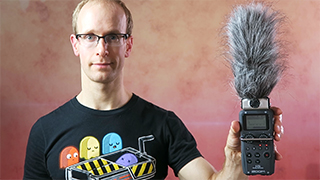
If you are planning on shooting high quality videos, take a moment and think about your audio. Viewers will put up with bad video if the audio is good, but if the audio is bad, people will click away really quickly.
The main microphone that I use for film making and for recording the audio for all of my tutorials is the Zoom H5 usually in combination with the Zoom SGH-6 Shotgun Microphone attachment.
The shotgun microphone is highly directional and suppresses ambient noise. This gives me a nice and crisp sound even when I record at home where I usually struggle with echo and my neighbours mowing their lawn.
One thing I love about this microphone is that I can just plug it straight into my computer via USB. Not only does this supply power, it also allows me to record directly in programs such as Adobe Audition or Movavi Screen Capture and I get that nice and crisp audio quality I want.
If you are looking for a cheaper option, for a long time I used to record with the smaller brother of the H5, the Zoom H2N instead. It does not have a shotgun microphone attachment, but does give you very authentic and clear audio to work with. Check out some of my older YouTube videos for examples of what you get out of the Zoom H2N.
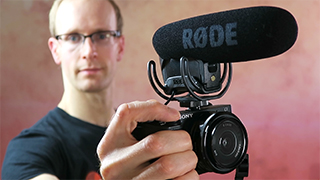
When I am filming with the Canon 5D or the Sony Alpha, I like to bring along the Rode VideoMic. It’s a great on-camera shotgun microphone that will give you good quality and it comes with a furry windscreen to protect against wind noise (not shown in picture). I just wish my Canon G7X had a hotshoe adapter and an audio jack and I’d have the perfect combination! Or that the Sony Alpha 6500 had a flip screen.
My Tripod Collection – Manfrotto & Gorillapod
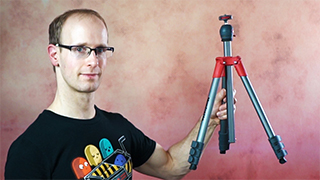
I use a lot of different tripods for all sorts of situations. I have small ones that I can sit on my desk to film with the Canon G7X, medium sized ones to hold the Zoom H5 when I record a skit for a tutorial and large ones to hold my Canon 5D and potentially even a camera slider.
The tripod in this image is the nifty Manfrotto MKCOMPACTLT Compact Tripod . We actually bought this one in Yellowknife as we didn’t have space in our luggage to bring one long and this one proved a nice combination of compact and sturdy. It won’t be able to hold a full-frame DSLR with a big lens, but it can hold most compact and mirrorless cameras and audio equipment without any issues.
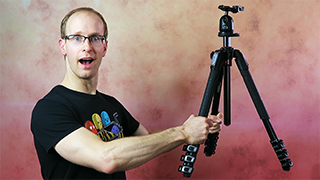
The Manfrotto MK190XPRO4 with the XPRO Ball Head is my workhorse. It can hold up anything from my big DSLRs to even the my heavy Rhino Camera Slider which weights in at somewhere around 5kg. I can flip the mid-section to be horizontal for some cool top-down shots and flat lays and the construction is so sturdy that I never have to worry about being too rough with it.
This is not travel sized tripod and so I use it primarily for filming tutorials, skits and short films at home. I comfortable take it on road trips as well where luggage space isn’t a limitations and I can just throw it into the boot.
as well because it is super durable, tall and allows me to change the mid-section to horizontal so I can get some cool top-down or flat lay shots.
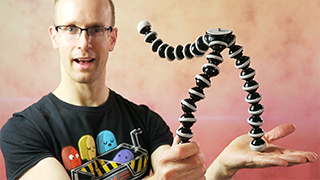
Finally, a tripod every film maker or photographer should have – The Gorillapod. This tripod has flexible legs so you can wrap it around railings, tree branches and you can easily level it out no matter what the surface. It is surprisingly strong and super easy to take along with you on any travel. This tripod comes along with me onto any holiday we go on. A must have!
Comfy Headphones – Audio-Technica ATH-M50x
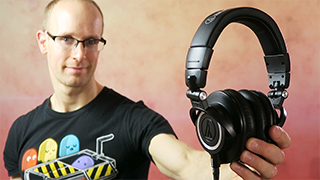
There are SO many great options for good headphones. The ones I prefer to use because they aren’t too expensive and give me a good balance between comfort and sound quality are the Audio-Technica ATH-M50x.
I like to check my audio at least once using these headphones to see if I can spot any strange noise or hum or buzzing that I might have missed while editing with my speakers. Just be aware that most viewers will not watch your videos with professional studio headphones and so you should mainly be worried about making it sound good on ordinary speakers and standard mobile headphones. I just like giving my audio a once-over to make sure my quality is solid.
Final Words
Gear does not make or break your movie. You do not need the latest and greatest gear to start creating great videos on YouTube or shooting captivating photos to share on Instagram or Facebook. You can live stream from your phone. Don’t let the lack of gear hold your back, use what you have and be creative :)
